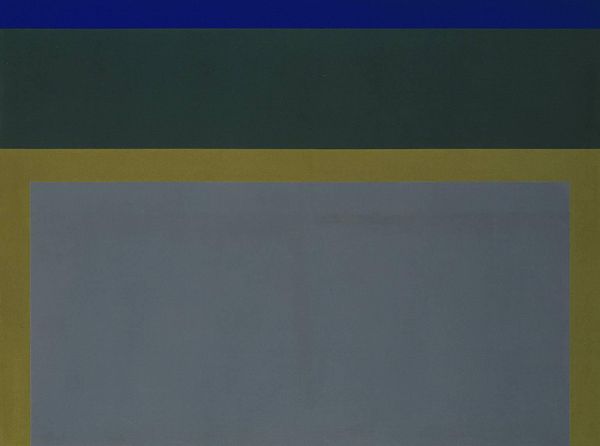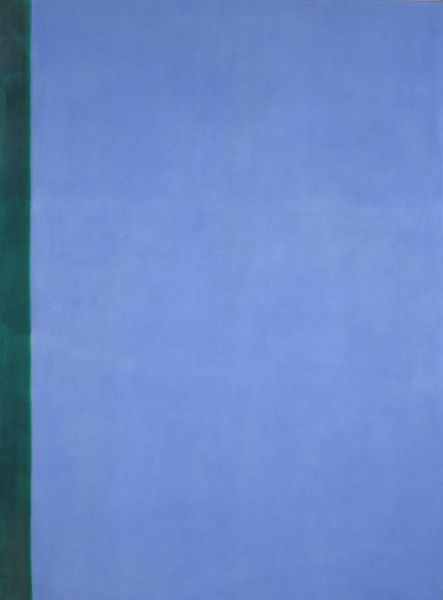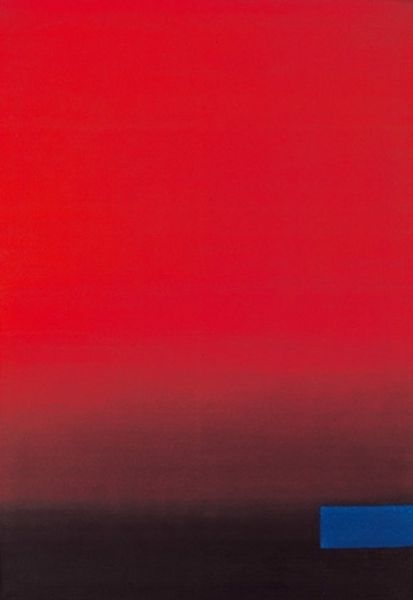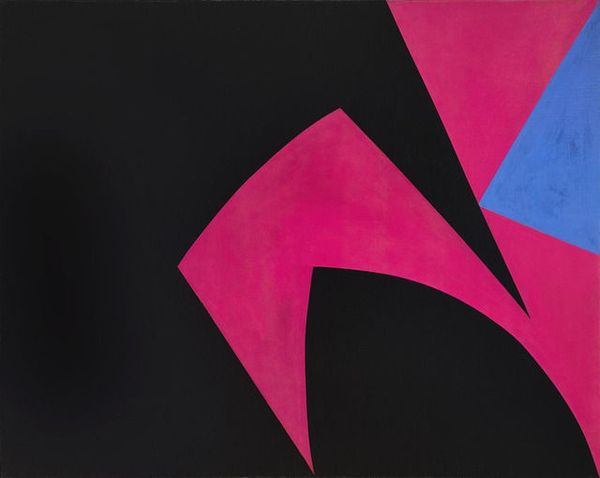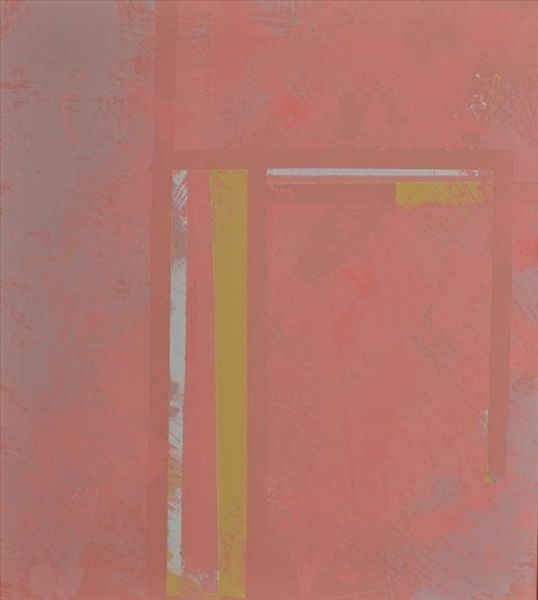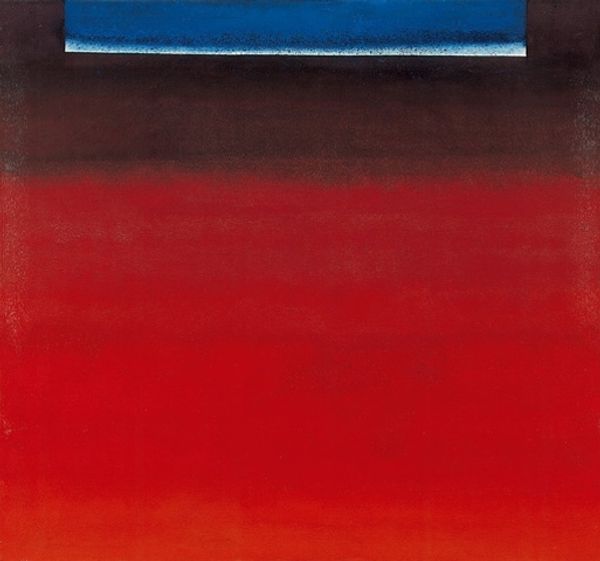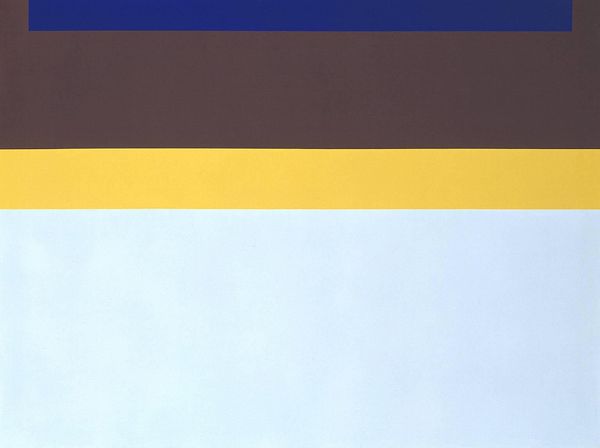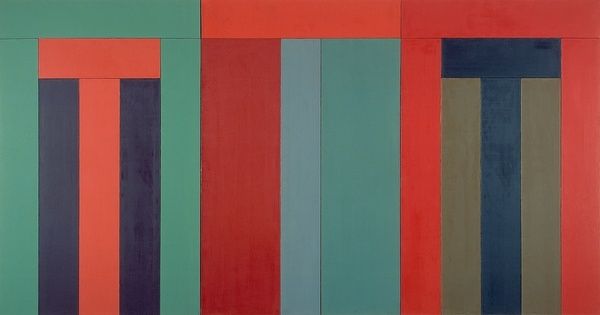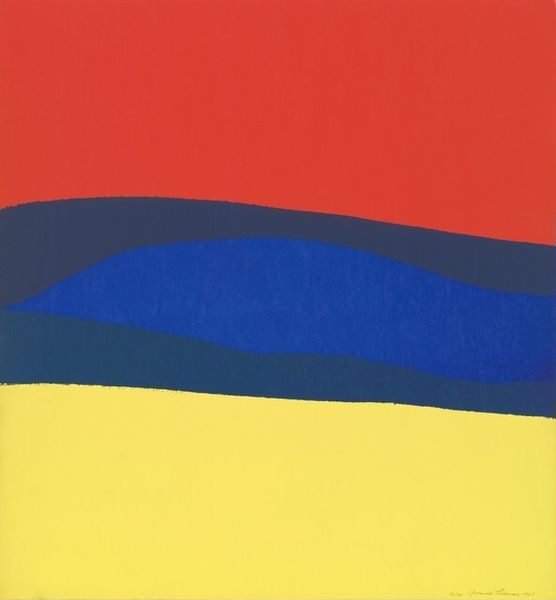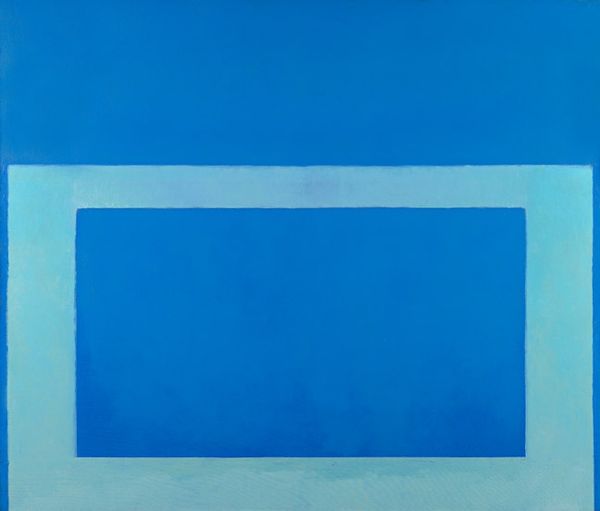![[no title] by Jean Spencer](/_next/image?url=https%3A%2F%2Fd2w8kbdekdi1gv.cloudfront.net%2FeyJidWNrZXQiOiAiYXJ0ZXJhLWltYWdlcy1idWNrZXQiLCAia2V5IjogImFydHdvcmtzLzAyNDUxMTk4LWZkYzUtNGZiOS05MWViLTMwYzJiN2FiNjI4NS8wMjQ1MTE5OC1mZGM1LTRmYjktOTFlYi0zMGMyYjdhYjYyODVfZnVsbC5qcGciLCAiZWRpdHMiOiB7InJlc2l6ZSI6IHsid2lkdGgiOiAxOTIwLCAiaGVpZ2h0IjogMTkyMCwgImZpdCI6ICJpbnNpZGUifX19&w=3840&q=75)
Dimensions: support: 1127 x 1501 x 22 mm
Copyright: © Tate | CC-BY-NC-ND 4.0 DEED, Photo: Tate
Curator: This painting by Jean Spencer, currently untitled, presents itself as a field of horizontal color bands. Editor: It feels monumental, doesn't it? Like standing before a simplified, somewhat somber landscape. Curator: I'm struck by the materiality. Consider the labor in applying these flat, opaque colors – the physical act of the artist, the types of pigments used, and how its making relates to the tradition of color field painting. Editor: For me, the colour choices feel deeply symbolic. The somber grey and red evoke a sense of constraint, almost like barriers. And above, that hopeful band of turquoise. It's a visual poem about resilience. Curator: Perhaps. Or perhaps it's a deliberate engagement with mass production and consumption of art, challenging notions of uniqueness and artistic genius. Editor: Whether it's intentional or not, those colours resonate. It's a compelling visual statement. Curator: Indeed. It causes one to reconsider the value of the process, not just the final image.
Comments
Join the conversation
Join millions of artists and users on Artera today and experience the ultimate creative platform.
tate 6 months ago
⋮
Jean Spencer was born in 1942 in Hampshire. She studied at Bath Academy of Art between 1960 and 1963 and began to produce work of a Constructivist nature. After leaving college Spencer became associated with a group of artists whose work was emphatically abstract, rational in its procedures and conceptual basis, and who frequently employed mathematical and systematic means to produce works of art. Spencer's earliest works included constructed abstract reliefs which employed mathematics as a means of generating formal relations and structures. Between 1966 and 1969, the mathematical basis of Spencer's work became more pronounced, so that her work frequently involved systematic variations around a simple geometric configuration. This led Spencer to work in series, a procedure which became a prominent characteristic of her subsequent work. During the 1970s she became a member of the Systems Group which she co founded with her husband, the artist Malcolm Hughes (1929-1997) in 1969. The recognition of the importance of systematic process was the core ethos of this association of artists and, in this collaborative context Spencer exhibited widely in Britain and abroad. In later years, Spencer's work gradually freed itself from its earlier adherence to mathematical principles and, instead, drew increasingly on her research into the properties and relations of colour, acquiring a more intuitive basis as it did so. Even so, her work remained rooted in the central principle of clarity - both visual and conceptual. The six works in this series are among the last Spencer worked on before her death in 1998. The series consists of six identically sized panels arranged in sequence. Each panel is divided into horizontal bands or blocks of colour of differing size, no one colour being repeated in the same image. Spencer places stripes of different hue, tone and intensity next to one another, exploring the affect one colour has in its neighbours. In the internal formal relations operating within each work, and also in the compositional breadth established within the group as a whole, the central tenets of Spencer's work - clarity and rational authority - achieve an expression which is at once grand and understated. The paintings were produced during a residency at Churchill College, Cambridge. However, illness made working difficult and the final painting was completed by an assistant working to her instructions, in the week she died. Further Reading:Michael Tooby, Countervail, exhibition catalogue, Mappin Art Gallery, Sheffield 1992, pp.22-3Michael Harrison, Testing the System, exhibition catalogue, Kettle's Yard, Cambridge 1996Norbert Lynton, Systems, exhibition catalogue, Arts Council, London 1972, p.48 Paul Moorhouse March 2000Revised by Imogen Cornwall-Jones December 2001

